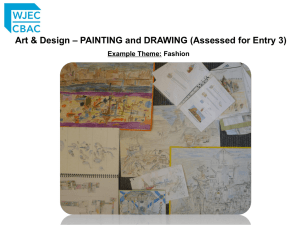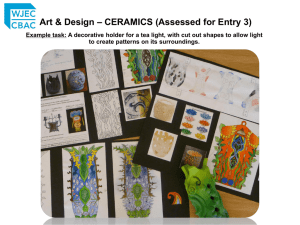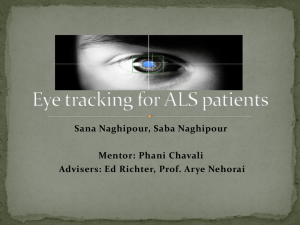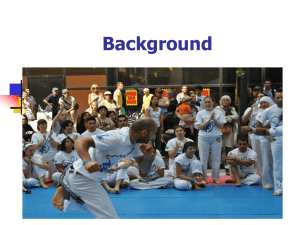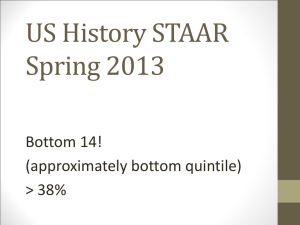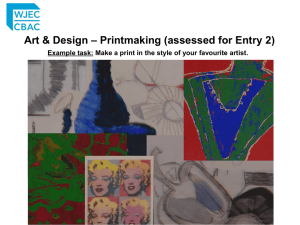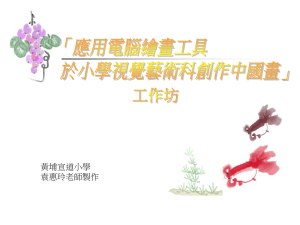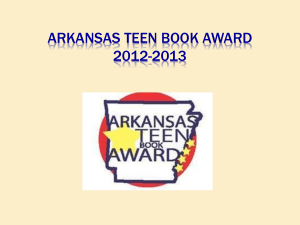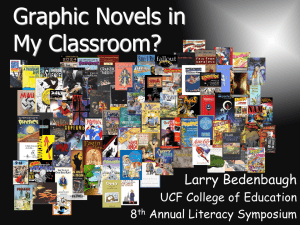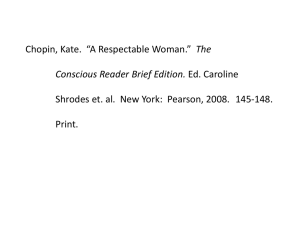GRAPHIC DESIGN (Assessed for Entry 2)
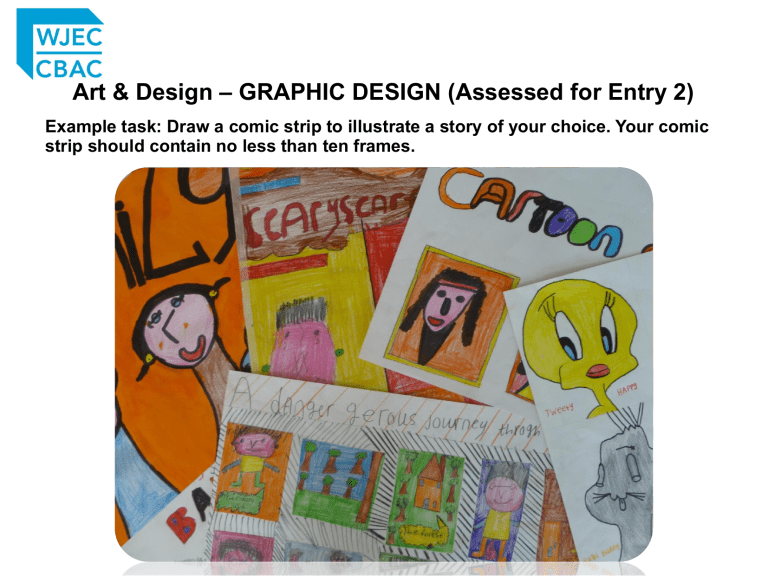
Art & Design – GRAPHIC DESIGN (Assessed for Entry 2)
Example task: Draw a comic strip to illustrate a story of your choice. Your comic strip should contain no less than ten frames.
AC1.1 Select references and resources to support graphic design work.
The pupil has selected a number of appropriate references and resources
AC1.2 Respond to observations and experiences relating to a task or theme.
The pupil has made a basic response to the style of cartoon .
AC1.3 Make references to the work of artists, craftspersons and / or designers.
There are references to Disney as well as the work of other well known cartoonists.
AC2.1 Use materials, equipment and basic techniques appropriate to graphic design work.
AC2.2 Use visual elements in practical work, such as: colour; pattern; texture; line; shape; form; space; tone.
The pupil has used materials, equipment and basic techniques appropriate to graphic design, as well as the visual elements, that lend themselves to this particular task. The resulting work is typical of a comic strip, including black outline, flat colour, simplified shapes and typography
AC2.3 Develop and idea for a graphic design outcome.
There is evidence of development of ideas with written notes.
AC3.1 Produce an outcome in response to a task or theme using graphic design processes.
AC3.2 Present a graphic design outcome.
The pupil has produced an appropriate graphic design outcome in response to the task and has presented it as the front and back cover of a comic together with an inside page featuring a story in 10 frames.
General Comments
This pupil fulfils all the criteria for an Entry 2 .
Art & Design – Graphic Design (assessed for Entry 2)
Example theme: Competitions.
AC1.1 Select references and resources to support graphic design work.
Within the general theme of “Competitions” the pupil has investigated medieval combat with a view to designing a poster for a modern day re-enactment. A sample of the research shows internet images of such events as well as examples of artists' work covering similar topics.
AC1.2 Respond to observations and experiences relating to a task or theme.
The pupil has responded in a personal way both visually, using drawings and photographs, and in written form.
AC1.3 Make references to the work of artists craftpersons and designers.
There are a number of different references to artists and craftspersons, and the influence of the Bayeux
Tapestry in particular can be seen in the work. In this example the pupil has used the paper cut-out method to recreate the simple shapes noted in the tapestry.
AC2.1 Use materials, equipment and basic techniques appropriate to graphic design work.
AC2.2 Use visual elements in practical work, such as: colour; pattern; texture; line; shape; form; space; tone.
The pupil has used a variety of 2D materials and techniques including collage, photography and simple printmaking. A number of visual elements have also been covered.
However, experimentation with text and layout, which would have been most appropriate for this particular piece of work are missing.
AC2.3 Develop ideas for a graphic design outcome.
The pupil has used a landscape image together with one of his own photographs to produce the final design as a polystyrene print.
AC3.1 Produce an outcome in response to a task or theme using graphic design processes
AC3.2 Present a graphic design outcome.
The pupil has used simple printmaking together With ICT to produce an outcome in the form of a poster advertising a medieval battle re-enactment.
General Comments
A number of ACs have been well covered, particularly the initial research, suggesting that this pupil could have achieved an Entry 3. However, key elements important to graphic design work are missing with the result that evidence for even Entry 2 is very thin in certain areas.
There is no experimentation with typography in any of the development work.
Also, the development of ideas is quite limited with no alternative layouts being considered.
The final outcome is disappointing and doesn't really work as a poster, emphasising the need to have worked with text and layout throughout the unit.
Art & Design – GRAPHIC DESIGN (assessed for Entry 3)
Example task: Design a logo for a coach company called 'Day Tripper'.
AC1.1 Select a range of references and resources to support graphic design work.
A limited range of references and resources, although a number of coach company logos have been downloaded from the internet.
AC1.2 Produce visual and / or tactile records of observations and experiences relating to a task or theme.
There is little evidence of the pupil’s own visual responses within the research, apart from this logo drawing.
Written and / or oral comments could also have been used to enhance this section of the submission. e.g. Which coach company logo works best and why?
AC1.3 Identify the influence of artists, craftspersons and / or designers on their own practice.
There is evidence of some consideration of how typography and logos are used on coaches .
AC2.1 Select and handle materials, equipment and techniques appropriate to graphic design work.
Good coverage of this assessment criteria particularly with the use of ICT.
AC2.2 Use visual elements in practical work, such as: colour; pattern; texture; line; shape; form; space; tone.
The visual elements colour, line and shape, which are most appropriate for this task are well covered.
AC2.3 Develop ideas for a graphic design outcome, modifying work as needed.
There is evidence of development of ideas as well as modification of work.
AC3.1 Use graphic design processes to produce an outcome in response to a task or theme.
AC3.2 Present a resolved graphic design outcome with some consideration of refinement.
The pupil has used ICT to produce a resolved, refined graphic design outcome in response to the task. This includes a letterhead, key ring and brochure.
General Comments
Overall a good unit of work deserving an Entry 3. However, as already noted AC1.1 and AC1.2 would benefit from additional work.
The strong aspects include the use of ICT and the presentation of the final outcome in various forms, i.e. letterhead, key ring and brochure, all of a high standard.
